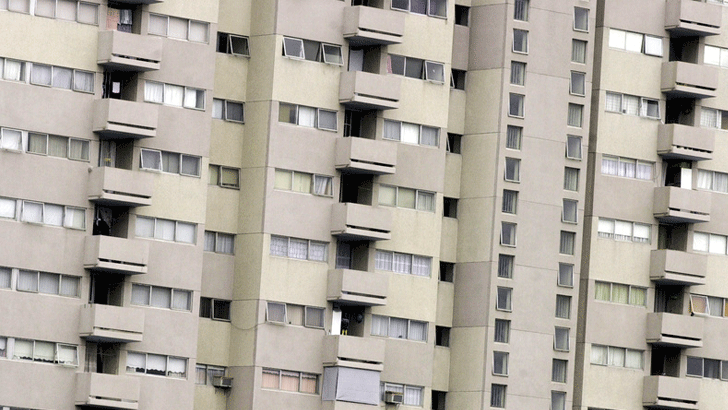Welfare control spreads to public housing

Australia’s largest landlords have just stitched up a deal that will hand them the power to deduct money from the welfare payments of their tenants. Under the arrangement, state housing authorities – landlords to more than 300,000 households – will be able to divert an income support or family tax benefit away from its intended recipient and into their own purse.
Currently, a public tenant, the same as anyone else living in rented accommodation, decides how and when to pay rent to their landlord. Under the new “support” scheme, public tenants can have their social security payments “diverted” if they fall behind on rent. The compulsory deductions, triggered by bureaucrats in state housing departments, can remain in place long after any arrears have been caught up.
The plan looks set to rope thousands more into the humiliating regime of compulsory income management. Also called “welfare quarantining”, income management was introduced by the Howard government in 2007 as part of the racist Northern Territory Intervention. Since then the policy has been continued and its reach significantly expanded under Labor.
It has so far involved Centrelink depositing up to 70 percent of a welfare recipient’s payment into a special bank account. The quarantined funds are accessed through a rations card that can be used only for approved purchases at approved businesses. The Australian Indigenous Doctors Association has called for the policy to be scrapped in light of what it says are its “profound long-term negative impacts”.
The extension of this policy to public housing tenants will require further amendments to the Social Security Act, amendments that both major parties support and hope to rush through parliament in the current sitting. Advocacy groups have criticised the draft of the scheme, released just weeks prior to the plan being put before parliament. The Darwin Community Legal Centre said that the scheme “would deny [tenants] the ability to afford basic necessities like food and clothing”.
While welfare quarantining represented the first time that government imposed controls on the way social security income is spent, welfare diversion is the first time that government has entirely cut the recipient out of the equation, instead paying their entitlement directly to another party.
When it’s up and running, tenants caught up in this new arrangement will find as much as 35 percent of their payments jumping straight off a Centrelink balance sheet into state government coffers.
The federal government, with state backing, says that rather than infringing the rights of social security recipients, the policy “will advance the protection of human rights by ensuring a proportion of social welfare payments are spent on housing costs”. It claims to be implementing the scheme in an effort to “reduce the risk of homelessness for public housing tenants”. This is a tall tale.
In the last two years, the Victorian Liberal government has ripped nearly half of all funding out of the state’s most successful public housing support and homelessness prevention program. This has crippled a program that, prior to the cuts, was already managing a waiting list of tenants wanting assistance. The minister for housing, Wendy Lovell, has made no secret of her government’s desire to clear more people out of public housing, lamenting that it has “become a destination” and not a “pathway”.
In Queensland, the Newman government has withdrawn all funding for the state’s only tenancy advice service, and all 23 advice centres are slated for closure in coming weeks. At the same time, it has introduced a “three strikes” policy to speed up evictions from public housing for such egregious conduct as “excessive noise from televisions” or having an “untidy yard”.
Last month, the Western Australian government announced it had inducted 35 new public servants whose job description will be to “clamp down” on public housing tenants. Last year in WA, more tenants were evicted to homelessness as a result of the government’s “objectionable behaviour” policy than as a result of rent arrears. This is duplicated at a national level, where the government’s own figures expose its rhetoric about preventing homelessness. Last year, just 0.0018 percent of public tenancies were terminated because of rent arrears. It’s a figure almost too small to register on a cheap calculator. The Productivity Commission also reports that rent collection rates in public housing are extraordinarily high, averaging 99.3 percent.
What is clear is that the proposed deduction scheme has little to do with avoiding homelessness and everything to do with the government further stigmatising public housing tenants and tightening its grip on the lives of Australia’s poor.